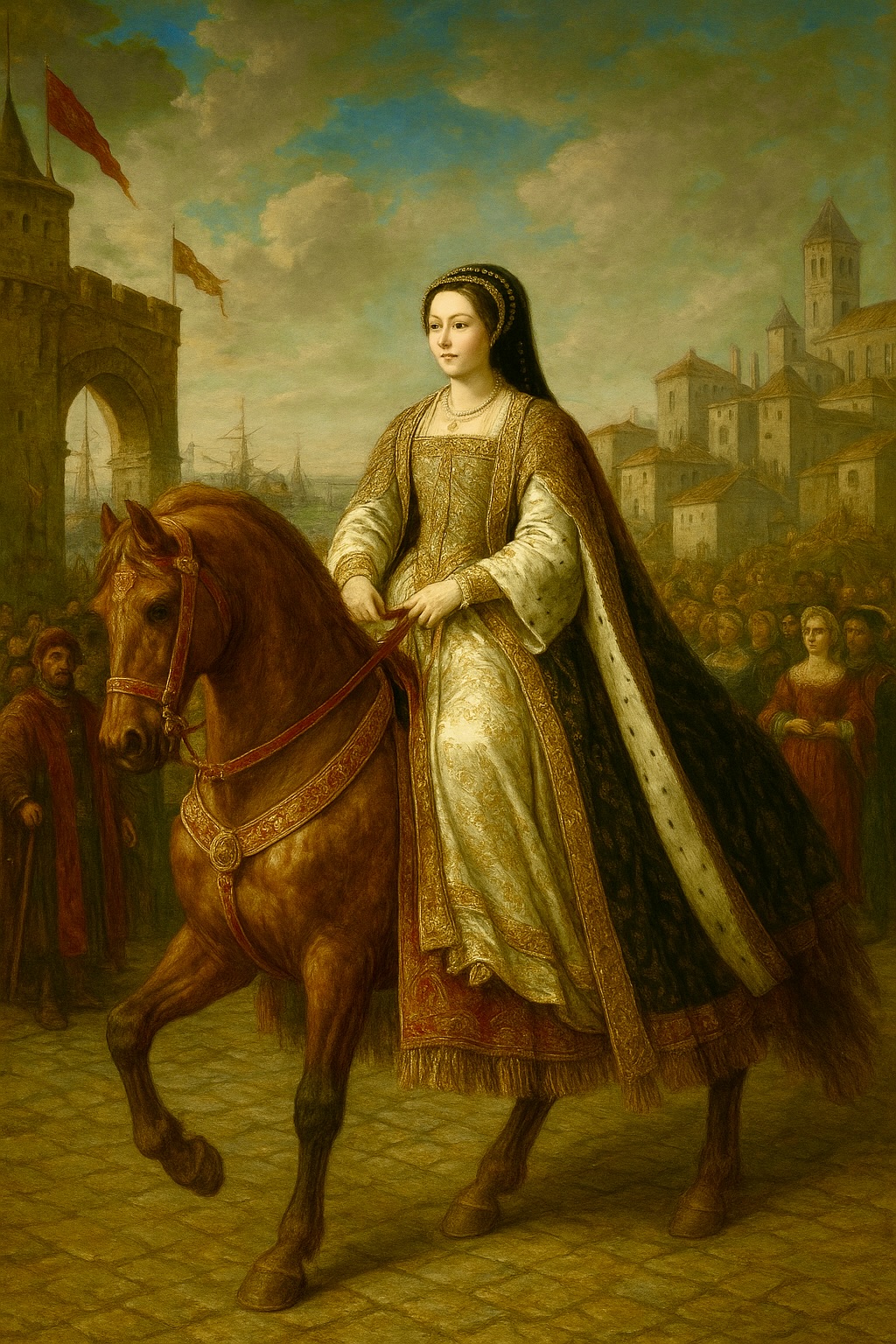ON THIS DAY: 23 October 1533 – the fourteen-year-old Catherine de’ Medici entered the port city of Marseilles astride a magnificent roan horse. It was one of those dazzling ceremonial moments where dynastic ambition, politics, and pageantry met in perfect Renaissance harmony.
Catherine, niece of Pope Clement VII, had come to France to wed Henry, Duke of Orléans – the future Henry II and son of King Francis I. Their union was no mere love match. Carefully arranged between the Pope and the French king, it was a diplomatic alliance designed to strengthen Franco-papal ties against the formidable Habsburg emperor, Charles V. Marseilles, France’s great southern port, was chosen for the ceremony as both a secure and splendid setting where Clement VII himself could disembark and bless the marriage in person.
Catherine’s ceremonial entry into the city was a spectacle of grandeur. Mounted on a roan horse – a rich reddish-brown speckled with lighter hairs – she cut a commanding figure. Riding, rather than being carried in a litter, sent a clear message: here was a young woman of dignity, vitality, and poise. In an age when equestrian display was a language of power, her appearance evoked the Renaissance ideal of princely majesty – confident, regal, and alive with symbolism.
The Medici knew the importance of image. Catherine’s horse was chosen for its striking beauty, its colour gleaming against her sumptuous attire. Her gown was woven of cloth-of-gold and silver, heavy with embroidery, the front opening to reveal an undergown of white satin, perhaps adorned with pearls. Her long sleeves were slashed to show glimpses of fine lace, in the height of Italian fashion. Over her shoulders fell a mantle lined with ermine and trimmed in gold cord, while around her neck glimmered strands of pearls and gemstones – gifts from her uncle, the Pope, and from King Francis himself. A jewelled French hood of crimson or black velvet framed her youthful face, uniting Florentine elegance with French refinement.
As she rode through the streets of Marseilles, the city erupted in festivity. Triumphal arches rose in her honour; pageants filled the squares with allegory and music; and every detail proclaimed the merging of two great powers – Florence and France, papal Rome and royal ambition.
Five days later, on 28 October 1533, the wedding of Catherine de’ Medici and Henry of Orléans was solemnised at Saint-Ferréol. Few could have foreseen that the young bride, once paraded as a symbol of alliance, would one day become one of France’s most formidable queens – a woman who shaped the destiny of the Valois dynasty and steered the realm through its most turbulent years.

